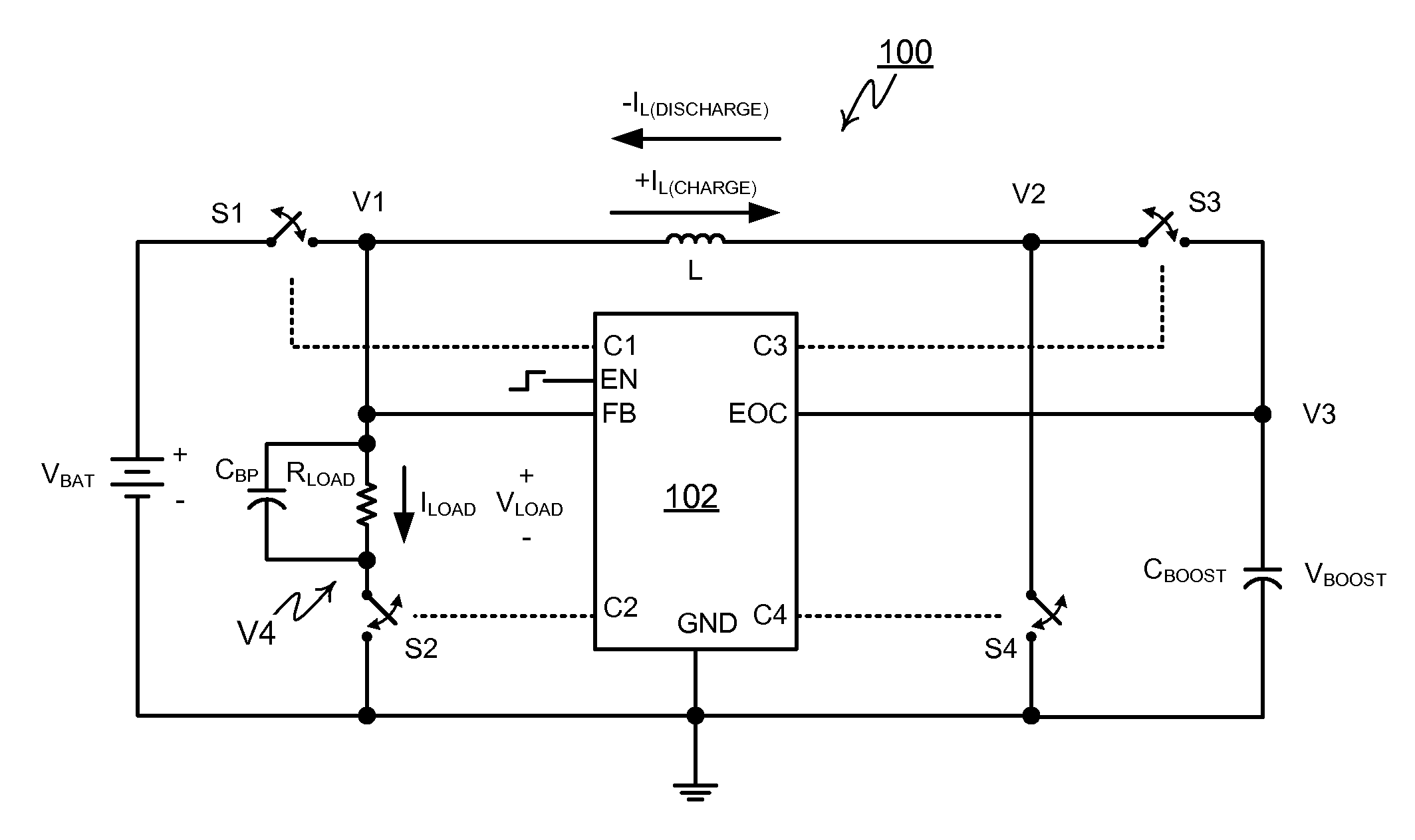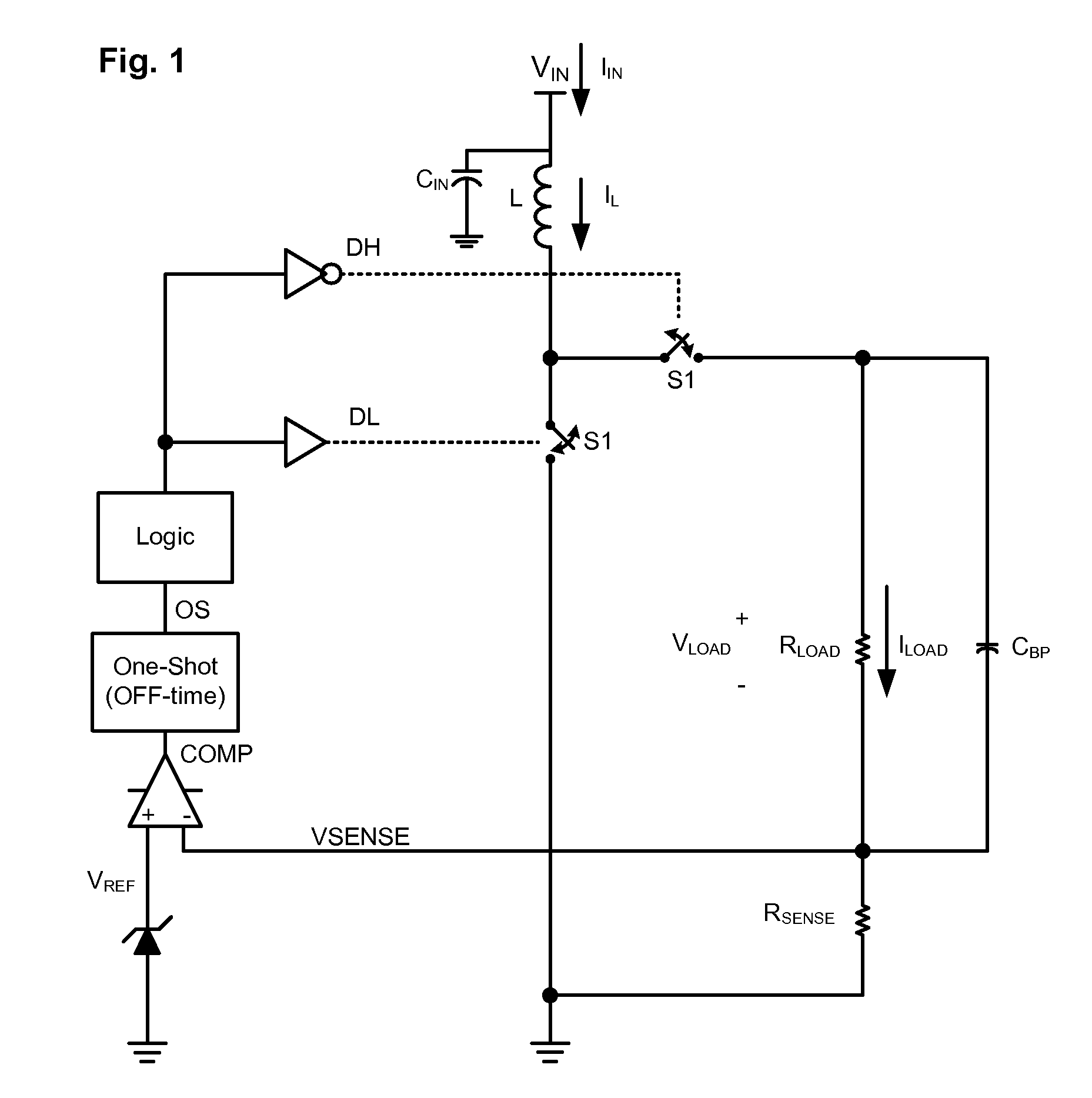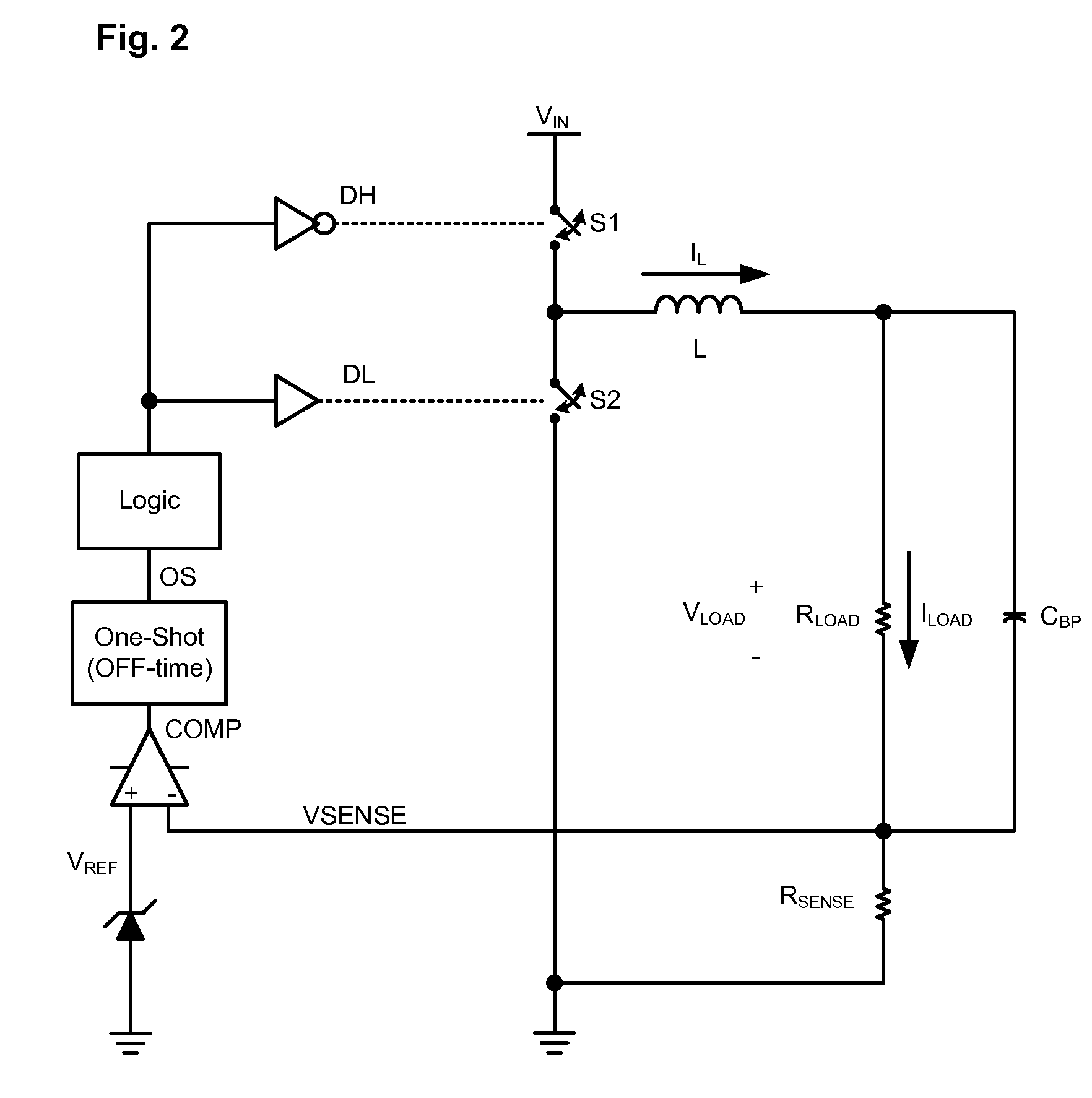Bi-directional Boost-Buck Voltage Converter
a voltage converter and bi-directional technology, applied in the direction of power conversion systems, dc-dc conversion, instruments, etc., can solve the problem of exceeding the peak power capability of portable energy reservoirs
- Summary
- Abstract
- Description
- Claims
- Application Information
AI Technical Summary
Benefits of technology
Problems solved by technology
Method used
Image
Examples
Embodiment Construction
[0046]FIG. 6 shows one preferred embodiment of the present invention, generally designated 100. Converter 100 includes an integrated controller designated 102 and four MOSFET switches S1, S2, S3 and S4. Switch S1 is connected between the positive supply voltage of the battery pack and a node V1. A string of 4 FLEDs (represented in the drawing by the resistor RLOAD) is connected in parallel with the bypass capacitor between the node V1 and the switch S2. The switch S2 is connected, in turn to ground.
[0047]An inductor L is connected between the node V1 and a node V2. Switch S4 connects the node V2 to ground. The switch S3 connects the node V2 to a node V3. The boost capacitor (CBOOST) connects the node V3 to ground.
[0048]Each of the switches S1 through S4 is connected to and operated by controller 102. Controller 102 is also connected to monitor a feedback voltage VFB at node V1 and an End-Of-Charge voltage VEOC at node V3.
[0049]Converter 100 receives “commands” from its containing de...
PUM
 Login to View More
Login to View More Abstract
Description
Claims
Application Information
 Login to View More
Login to View More - R&D
- Intellectual Property
- Life Sciences
- Materials
- Tech Scout
- Unparalleled Data Quality
- Higher Quality Content
- 60% Fewer Hallucinations
Browse by: Latest US Patents, China's latest patents, Technical Efficacy Thesaurus, Application Domain, Technology Topic, Popular Technical Reports.
© 2025 PatSnap. All rights reserved.Legal|Privacy policy|Modern Slavery Act Transparency Statement|Sitemap|About US| Contact US: help@patsnap.com



